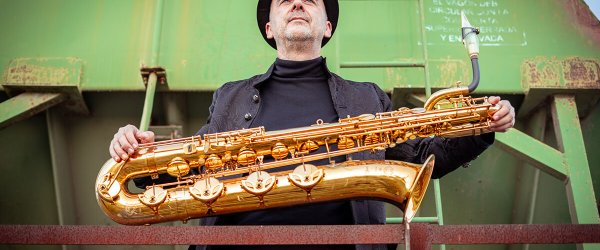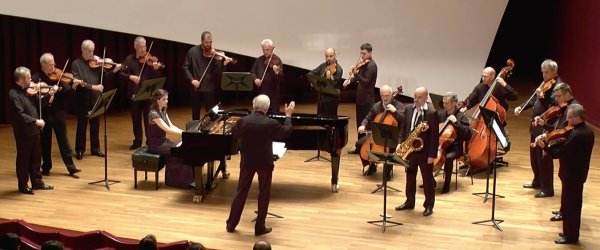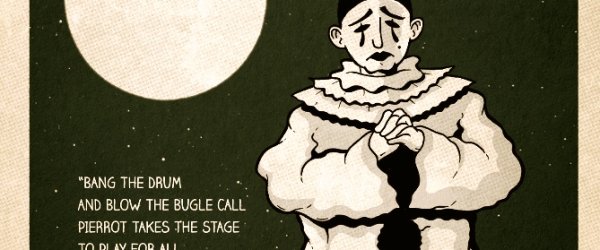.
Cover of the edition in Southern Music Company, San Antonio (TX, US)
It is a very good example of the original “classical” repertoire for duo with piano. You will enjoy working on the Garland Anderson’s SONATA
The Composer
GARLAND ANDERSON (1933 – 2001) was an American composer and pianist who lived in Indiana most of his life. He studied with Hans Gal and Roy Harris. His jazz and ragtime compositions are appreciated, particularly his work “Streetsyncs: Eleven Ragtime Pieces” for Piano. We should also mention his opera “Soyazhe”, which premiered in Denver in 1979, and his “Piano Concerto No. 2” for the pianist John Kozar. He wrote two sonatas for alto and piano, one for tenor and another for baritone.
I found very little information about the composer and only a few audios and videos of some of his works on the internet. I discovered his SONATA Op. 6 FOR BARITONE SAXOPHONE AND PIANO on the album “Upper Cut” recorded by Alex de Leeuw (baritone saxophone) and Guido Nielsen (piano) [ref. Erasmus Music Media WVH 227]. If you like this style of neoclassical American music with romantic melodies and playful motives, do not miss working on this piece.
Details of the work
Duration: ca. 12:30
Range (written): Bb2 – F5
TECHNIQUES: Tonguing accuracy, fast excerpts, diversity of articulations, long phrases, breathe control, intonation.
PERFORMANCE: Play with expressivity in the slow and melodic sections. Play with ease and agility in the fast movements. Conjunction with the piano.
Meaning and structure of Anderson’s SONATA
The SONATA Op. 6 FOR BARITONE SAXOPHONE AND PIANO has three different movements:
- ALLEGRO CON SPIRITO: This movement is written in the form of a classical sonata. The first theme has different articulations and rhythms that give it a kind of energetic character with a piano accompaniment like an ostinato. The second theme is more melodic (almost ironic), and the piano part has lighter chords and silences giving relax to the movement. After the development section, the themes from the exposition return and the movement ends with a coda in pp.
- ANDANTE SOSTENUTO: This is a very lyrical movement in the form A-B-A-C-A with slight tempo changes in the intermediate parts. Melodically and harmonically, it reminds us of the music of George Gershwin.
- ADAGIO-ALLEGRO: The introduction (Adagio) is evocative and inspiring. The Allegro, in 6/8, is playful and has some delicate technical elements as the precision of tonguing in the low register and some slurred wide intervals between the medium and low registers that require to be played with a solid air column. There is a short Adagio before the final coda that ends the piece in a brilliant way.
This work has not too many difficult excerpts in the high and low registers, neither staccato. Furthermore, the chamber music work required is not very difficult, since the structure of the work is quite clear, rhythms are simple and harmony is “tonal”.
In addition to these pedagogical aspects, this is also a good concert piece. Regarding the original repertoire for baritone saxophone and piano, Garland Anderson’s SONATA should be known and performed more frequently. I have nothing against transcriptions from other instruments, but we baritonists should spread the best original works of our repertoire. If we saxophonists do not, who will do it for us?
—
Would you like to know more about the Garland Anderson’s SONATA? Would you like to work on it? Don’t hesitate to contact me for more questions.
Joan Martí-Frasquier
Barcelona, January 2017
Update: May 2024





